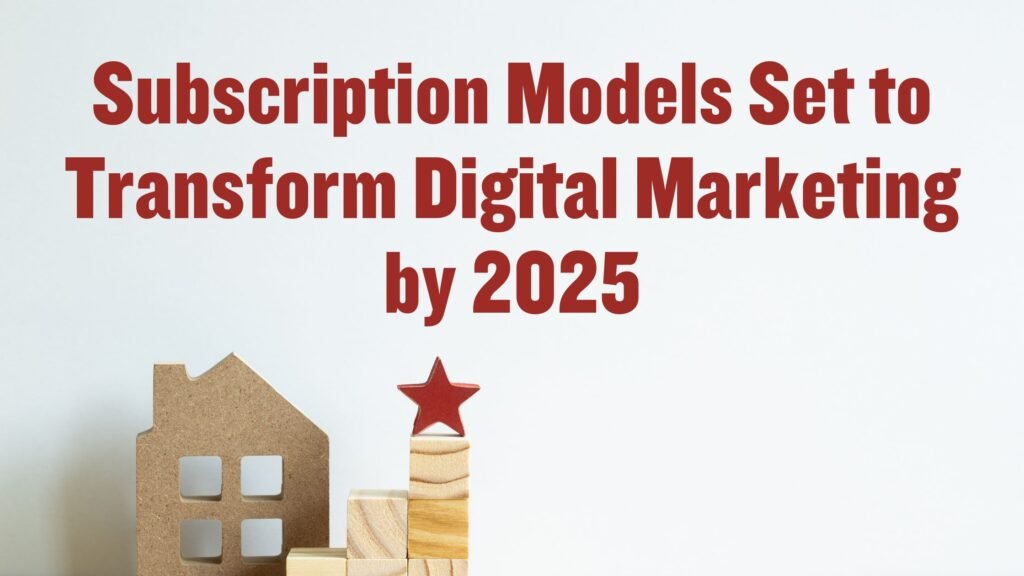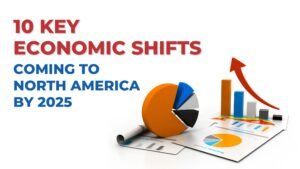This digital marketing trend has transformed under subscription models. With this model, companies target sustainable revenues, predictability, and more customer loyalty, which apparently this new model is filling and changing everything about how brands talk to their audience. As of 2025, it is expected that the new model would change the digital marketing concerning content creation, e-commerce, or any sort of services including software and fitness.
The Emergence of Subscription-Based Marketing
However, the subscription model is not new, and its recent popularity is explained through a change in consumer behavior and technology. With the rise of e-commerce and services available on demand, the consumer is more willing to enter into a regular commitment of payments for the sake of convenience, personalization, and exclusivity.
Why Subscription Models are Gaining Traction
There are numerous reasons for the prevalence of subscription models within the digital marketing campaign.
- Customer Retention: The model brings about customer loyalty since the users would not switch to the competitors after locking themselves into a subscription.
- Besides these, subscriptions also create predictable revenue streams and reduce reliance on boom-and-bust sales streams.
- Data and Personalization: They are able to collect precious data on consumer behavior, providing companies with hyper-personalized marketing opportunities.
The Zuora report indicates that the subscription economy has grown at an absolute rate of well over 435% in the last ten years and, hence, is not to be an exception; by 2025, many industries already project subscriptions as the prime sources of revenues.
How Subscription Models Are Revolutionizing Digital Marketing
Customer Experience Improved
The biggest change that comes through subscription models is the customer experience. Because a one-time outright purchase is not involved, the business needs to constantly re-engage and delight the customer so that he will not lose him. Thus, digital marketing strategies should innovate towards concentrating on prioritizing:
- Personalization: Content and offers, as desired by the users.
- Engagement: Often, effective communication happens through emails, social media posts, and content updates that engage the users.
- Value-added content: It could include in this scenario, webinars, tutorials, and other premium content that might enrich the experience of subscribers.
Data-Driven Personalization
Subscriptions provide rich volumes of customer data, so businesses fine-tune the digital marketing operations. Businesses track usage patterns, preferences, and feedback-all which increases the accuracy of targeted campaigns for the future.
For example, any streaming business, Netflix or Spotify, is competing to understand through viewing or listening patterns by subscribers to recommend personalized content that keeps users engaged and from canceling their subscriptions. For subscription-based businesses, it’s the way of data-driven personalization that will help them stay ahead of the game and have an edge over the digital marketplace.
Subscription-Based Content Models
Subscription models in the content space appear to be finally picking up serious traction. Continent Creators, Bloggers, YouTubers, and so on are using services like Patreon and Substack, where the subscription model is providing real chances for making sustainable income instead of old money models.
Benefits in Subscription-Based Content
- Direct Monetization: Direct earnings by creators from their audience; no need for third-party platforms.
- Loyal Audience Base: It creates exclusive space for the most loyal followers only, which means involved audience.
- Steady Income: Subscription generates recurring revenue without depending on advertising or sponsorship for sustaining revenue flow.
Companies adopting subscription-based models:
E-commerce
Another raging trend in the electronic commerce market is subscription boxes and membership programs. Companies, like Dollar Shave Club, Blue Apron, and Stitch Fix, curate nice goods with a predictable rate of delivery to the subscribers. Such platforms bring loyal customers and simultaneously reduce the efforts of acquiring new customers.
Key benefits of e-commerce:
- It also brings a continuity of value to the customers for customer retention.
- Cross-selling opportunities: Firms can suggest additional accessories or other products complementing the subscribers.
- Data Insights: The purchase preferences and buying behavior can be further segmented and targeted by the e-commerce companies.
McKinsey & Company quoted, “15% of all online shoppers have subscribed to at least one or more subscription services for the daily delivery of products”.In 2025, it is expected that the e-commerce subscription model will account for a major part of retail sales made online.
Software as a Service (SaaS)
Of course, another keystone of the SaaS world is subscription models. Companies such as Adobe, Microsoft, and Salesforce have abandoned buy-to-use models and opted instead for subscription models where they provide periodic updates and customer support through their plans.
Why SaaS Companies Accept Subscriptions
- Steady cash flow: Subscription revenue is relatively very predictable, hence better financial planning.
- Regular updates and services based on a subscription would help increase the possibilities of attaining loyal customers.
- Flexibility: It allows SaaS companies to create multiple tiers of pricing and subscription lengths to fit as many different customers as possible.
Challenges and Opportunities for Subscription Marketing
Customer Churn
That leaves customer churn as the biggest challenge that the subscription-based business faces. According to Recurly in a survey, an average month has a churn rate between 5 and 7%. To combat such challenges, the digital marketers need to stay in touch constantly with customers to give them personalized experiences and offers that keep customers engrossed.
Strategies to Prevent Churn:
- Loyalty programs: Special offers or rewards to long-term subscribers may increase retention.
- Seamless Onboarding: The first experience in a subscription service indeed matters. Seamless onboarding is one way of early cycle reducing churn.
- Regular Feedback Loops: Seek and implement customer feedback that enables a decrease in cancellations through product improvements.
Subscription Overload
Increasing problems of subscription fatigue arise because more and more brands are moving towards the subscription model. Consumers who will pay money for a dozen services every month feel overwhelmed. Business differences should be let stand out and value, while a consumer receives through subscriptions, shouldn’t vary.
The Future of Subscription Models in Digital Marketing
With emerging subscription models, incorporating such models in a business’s digital marketing will bring higher customer retention, more personal experiences, and stable income. However, in order to overcome these issues of churn and subscription fatigue, constant innovation and approaches with the customers would be required.
The Role of Emerging Technologies
By 2025, AI and machine learning will further perfect subscription-based marketing: whereby AI will make personal content, optimized prices, and predictions of churn possible, thus enabling businesses to experience longer retention of customers through customized experiences. Basically, subscription models are absolutely needed for digital marketing, and, indeed, represent the key entrance to open new ways and bring people closer to long-lasting relationships with customers.






Leave a Reply